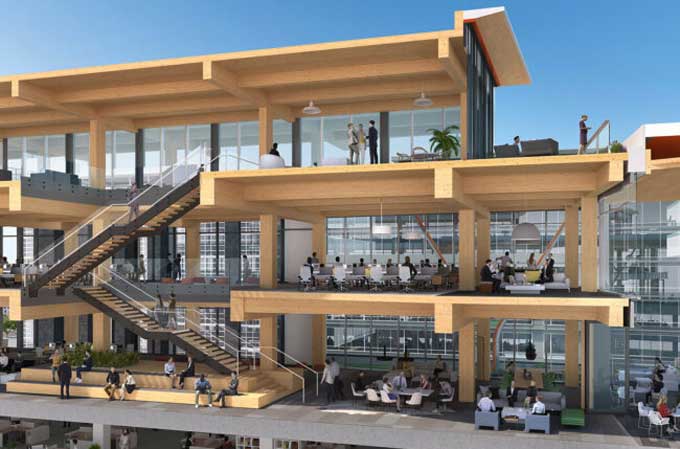
Construction with Mass Timber: What you need to know

These days, many research minded project teams aim to build tall buildings with structural wood. Buildings for mass timber construction do not cover these types of buildings. Testing is necessary to prove they perform as well as or better than concrete and steel buildings.
There are several mass timber products in the mass timber family, including cross laminated timbers, glue laminated timbers, structural composite lumbers, nail laminated timbers, and dowel laminated timbers.
Define Mass Timber
In mass timber, wood products are glued, nailed, or dowelled together in layers using state of the art technology. As a result, large beams, posts, and structural panels are generated.
The term "mass timber" refers to these products due to their exceptional strength and versatility.
Workflow of Mass Timber Construction
Light frame wood construction uses solid-wood beams or columns often manufactured off site for load bearing walls, floors, and roofs. Mass timber construction, on the other hand, is built with big, solid wood panels. Unlike concrete and steel, mass timber is significantly lighter in weight but has high strength ratings.
A mass timber product consists of thick, compressed layers of wood that are capable of supporting structural loads and can be constructed into panelized structures. Laminations, fasteners, and adhesives are typically used to form them. Compared to carbon intensive materials and building systems, mass timber can complement light-frame and hybrid construction options.
Mass Timber Construction Benefits
Structure Strength
Glue, dowels, or nails are used to bind multiple load bearing wood panels, making mass timber extremely strong and stable. Based on the desired structural integrity, layers of wood panels in a mass timber can be compressed parallel or perpendicular.
Sustainability
Mass timber production relies heavily on lumber as a raw material. The wood is not only sustainably harvested using best practices, but it is also sourced for construction use.
There would be a reduction of 15 to 20 percent in carbon dioxide emissions if mass timber were used instead of steel.
Cost Effective
In comparison to concrete building construction, mass timber is 25 percent faster to construct and requires 90 percent less construction traffic. For projects with shorter timelines, it is possible to pre-fabricate and assemble mass timber building elements on site. Safety on construction sites is improved due to mass timber construction.
Fire Resistance
Charred mass timber forms an insulating layer on the surface when it is exposed to fires, protecting the interior wood. Gypsum wallboard would help protect the mass timber, which would help prevent damage during a fire.
Lightweight
In comparison to concrete and steel, mass timber is light in weight and strong. Mass timber buildings weigh approximately one fifth as much as concrete buildings, which reduces the size of the foundation, inertial seismic forces, and embodied energy. As a result of their high strength to weight ratio, they perform well during seismic activity.
To learn more, watch the following video tutorial.
Video Source: Adera Development Corporation
Wrapping it Up
An engineered wood product called mass timber is a wood panel that is glued or fastened in layers in order to produce a structure with exceptional strength and stability.
There are a number of uses for the production, such as architectural panels, columns, beams, load bearing structures, or even interior finishes, as it is so versatile.
Using mass timber or heavy timber has proven to be an innovation in multifamily, commercial, and institutional construction with the completion of more than 1300 multifamily, commercial, and institutional projects. Because of its durability and strength, this technology has gained popularity.


